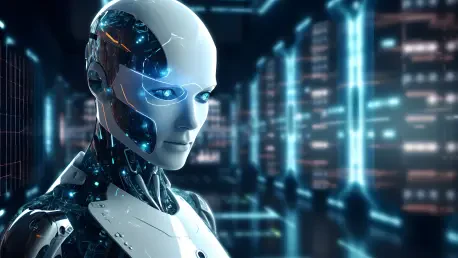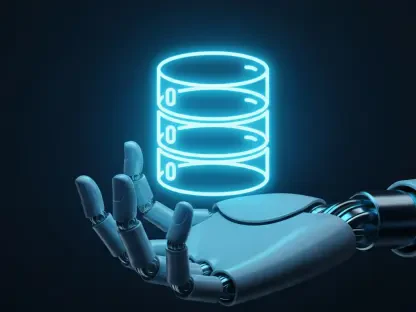Anand Naidu, a seasoned expert in development with extensive knowledge of both frontend and backend coding, is here to shed light on the transformative impact AI has on web development. As businesses embrace AI-driven website creation, it’s crucial to understand how artificial intelligence is reshaping digital interactions—and Anand is the perfect guide on this exciting journey.
Could you explain what AI-driven website creation is and how it differs from traditional website building methods?
AI-driven website creation represents a fundamental shift from traditional methods, which often require specialized coding skills and long development cycles. Unlike conventional processes that demand manual wireframing, coding, and tweaking, AI-driven approaches utilize intelligent algorithms to instantly transform user inputs into fully functional websites. The difference lies in the automation and intelligence that AI brings, allowing for quicker and more adaptable site creation without the need for extensive technical expertise.
What are some common misconceptions about AI-driven website creation?
A common misconception is that AI-driven website creation is solely for tech-savvy businesses with substantial budgets. In reality, AI platforms are designed to be accessible to everyone, including those with little to no technical background. Additionally, people often think that AI might lead to cookie-cutter designs, but AI tools are versatile and adaptable, allowing for personalized and unique website experiences that reflect individual brand identities and goals.
How does AI contribute to the speed of website creation?
AI significantly accelerates the website creation process by automating tasks that traditionally take days or weeks to complete. By leveraging machine learning algorithms, AI handles wireframing, layout creation, and aesthetic adjustments almost instantaneously. This heightened speed enables businesses to focus on refining their content and strategies rather than laboring over repetitive coding tasks.
Can AI reduce the time spent on repetitive tasks like wireframing and layout structuring?
Absolutely. AI minimizes the time needed by automating these repetitive tasks. Rather than manually drafting wireframes or structuring layouts, AI analyzes initial inputs, understands user intent, and delivers ready-to-use designs. This automation allows creators to focus on content and purpose without being bogged down by tedious design work.
How does AI make website creation accessible to individuals with no technical background?
AI-driven platforms are designed with intuitive interfaces that simplify the web creation process. By doing the heavy lifting, AI allows users to transform their ideas into websites without having to learn complex coding languages or design principles. This empowers individuals to develop their online presence irrespective of their technical skills, facilitating broad access to digital spaces.
In what ways does AI empower users who are not familiar with coding or design principles?
AI empowers users by offering tools that automatically refine and optimize design decisions. With intelligent features that predict best practices, users can achieve professional-looking websites without needing design expertise. This democratizes technology, allowing everyone—from startups to solo entrepreneurs—to produce quality sites without hurdles.
How does AI contribute to strategic design decisions for websites?
AI plays a pivotal role by analyzing how users interact with websites and offering insights that guide strategic design decisions. Using data-driven models like heatmap predictions and UX analyses, AI helps structure sites to enhance user engagement, ensuring designs aren’t only aesthetically pleasing but are purposefully crafted to drive conversions.
What tools or features does AI use to enhance design choices?
AI employs a variety of tools such as eye-tracking models, predictive heatmaps, and UX algorithms to inform design choices. These features help tailor layouts, colors, and components to optimize user experience and align with brand personality. By embedding best practices in its logic, AI enhances both the function and appearance of the website.
In what ways can AI personalize the user experience on a website?
AI personalizes user experiences by analyzing visitor demographics, behaviors, and preferences to tailor content, layouts, and interactive elements in real time. This capability ensures that each visitor encounters a site aligned with their interests, which enhances engagement and satisfaction levels, creating a dynamic and responsive digital environment.
How does AI analyze visitor behavior to tailor the site to different users?
AI monitors and learns from user interactions, utilizing this data to adapt site elements dynamically. Whether it’s adjusting content based on browsing habits or reshuffling layouts in response to user preferences, AI continuously refines the website experience to cater to individual visitor needs, making each encounter unique and effective.
How does AI assist with SEO optimization without requiring in-depth expertise?
AI simplifies SEO optimization by automating processes traditionally managed by specialists. It refines meta tags, headlines, and URL structures to align with established SEO practices, performs keyword analysis, and identifies content gaps—all without manual intervention. This support means even those unfamiliar with SEO can achieve high search rankings effortlessly.
What role does AI play in providing analytics and feedback for continuous website improvement?
AI platforms incorporate analytics that offer insights into user behavior and site performance. By identifying patterns, flagging areas for enhancement, and suggesting actionable improvements, AI facilitates an ongoing feedback loop. This allows creators to iterate quickly and respond to user dynamics, turning websites into evolving tools that drive growth and engagement.
How does AI-driven website creation reduce the cost of developing and maintaining a website?
AI-driven website creation consolidates roles that would typically require distinct professional expertise—developer, designer, and SEO specialist—into a single, efficient system. It streamlines the entire process, reducing overhead costs significantly. This comprehensive capability offers startups and small businesses an affordable pathway to creating polished and functional websites.
Can you explain how AI helps in scaling a website as a business grows?
AI supports scalability by adjusting infrastructure, expanding layouts, and adapting content seamlessly as a business evolves. Whether it’s launching new pages or entering new markets, AI optimizes growth processes without necessitating a complete redesign. This adaptability ensures the website’s evolution aligns with the business’s expanding needs.
What measures does AI take to ensure websites are accessible to all users?
AI enhances website accessibility by automatically checking for compliance with accessibility standards. It ensures proper contrast ratios, integrates alt text for images, supports keyboard navigation, and offers compatibility with screen readers. These built-in features not only broaden audience reach but also foster an inclusive digital space.
Why is it important for businesses to focus on inclusivity in their digital presence?
Inclusivity is crucial as it reflects a commitment to accommodating diverse audiences, ensuring access for users of all abilities. Fostering inclusivity not only aligns with ethical standards but also expands market reach and enhances brand reputation. Businesses that prioritize inclusivity demonstrate responsibility and thoughtfulness in their digital initiatives.
How does AI ensure that websites remain updated with the latest innovations?
AI continuously integrates emerging technologies such as voice search and predictive models, ensuring websites stay ahead. By adapting these innovations in real time, AI keeps digital properties at the forefront of technological trends, enhancing functionality and user experience while maintaining relevance in an ever-changing online landscape.
What steps does AI take to improve website security and protect against potential threats?
AI enhances security by monitoring for anomalies, flagging threats, and auto-patching vulnerabilities. This proactive approach ensures real-time defense against hacking attempts and exploits. By continually updating security protocols, AI provides a robust barrier without relying on human oversight, safeguarding digital assets effectively.
How do you see AI evolving in the realm of website creation in the future?
AI is poised to revolutionize web development further by incorporating advanced predictive algorithms and extending automation capabilities. Future AI systems may offer even more intuitive interaction methods, streamline content generation, and enhance personalization precision, solidifying AI’s role as an indispensable asset in digital presence management.









